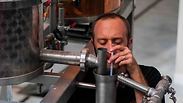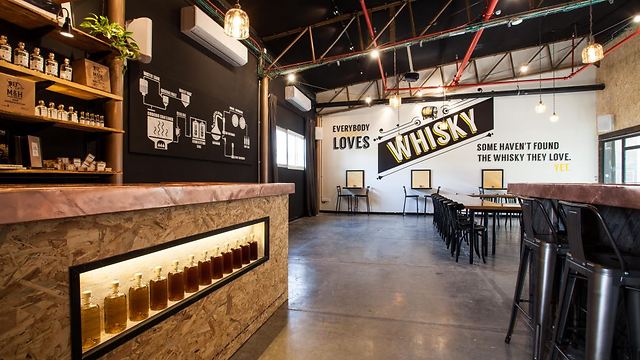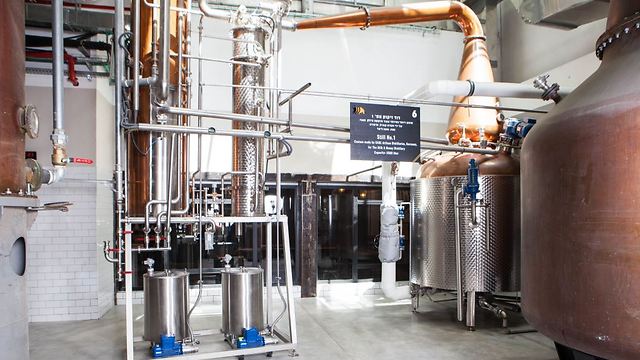
"That's gorgeous," purred world-renowned British whisky writer Dominic Roskrow, as he sampled the malt spirit from Milk & Honey, Israel's first whisky distillery.
Although not yet officially whisky—it has to mature in barrels for at least three years before earning that moniker, according to EU regulations—Roskrow told the Media Line why he was smacking his lips. "Israel's a warm climate, so this at 15 months tastes like a three-year-old whisky might… There's nothing sappy about it. At three years, we can expect it to taste like a six year old."
Milk & Honey's declared mission is to produce Israel's best single malt whisky, and its black and yellow striped bumble-bull symbol is meant to suggest the two components of its name, explained CEO Eital Attir. They chose to substitute a bull for the cow "because it's whisky, you know, it's a bit rough. It's not a cow."
However, despite Attir's insistence on referring to his single malt as "not whisky yet," deferring to EU (and Scottish) regulations about necessary barrel time, Roskrow said that it is anything but rough.
"There are only two ways you can make whisky," he explained. "You can try and do it like Scotland does, and you will almost certainly fail, or you can dare to be different—make a whisky (that) reflects your heritage and culture and adopt local customs, grains and production methods to produce a whisky that is unique.
"That's how I see the best new world whisky; it is in a different category to Scotch or Bourbon, and comparing it to those categories is as relevant as comparing Aussie rules footie to soccer or American football. It's not better, not worse—just different."
Milk & Honey also sells an iconoclastic and addictive Levantine Gin, heavy on the flavors of Jaffa oranges and wild hyssop with three small-batch ventures into the world of pre-whisky, ranging from 155 to 500 bottles each. The first, "Cask 004," deep amber in color, has spent eight months in casks formerly used for Israeli Cabernet Sauvignon vintages. The second, "Cask 010," is allowed to rest for six months in barrels of new American oak. Eventually, these will be component parts of a grand, new Israeli whisky.
For now, the closest you can get is "Live 100," though there are almost no bottles left to buy. "Live is a blend of five different casks," head distiller Tomer Goren said, and is made from malt spirits that have spent between two and 14 months in barrels. "It's a taste of what our end product will be—the very best, I think."
Unusual among distilleries, Milk & Honey is unabashedly urban, located in the heart of south Tel Aviv, right next to the Levinsky market where the spices for its gin originate. Israel's two other nascent whisky distilleries, Golan Heights and Pelter, are located in the chiller far north, near the Syrian border.
On his second whisky pilgrimage to Israel, reporting for Whiskey Magazine, Roskrow pointed out that however strict the Israeli adherence to the formalities of whisky production, the UK's exit from the EU could break the market wide open. "You don't have to be bound by that. Americans are putting out stuff that is two minutes old, and, I don't know, but something's wrong with it."
Article written by Noga Tarnopolsky
Reprinted with permission from The Media Line



















